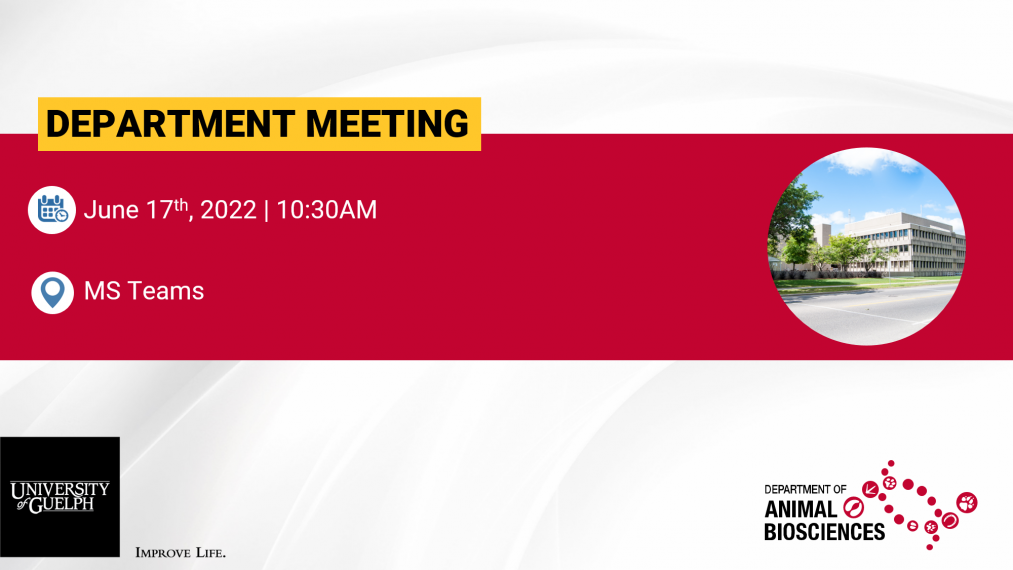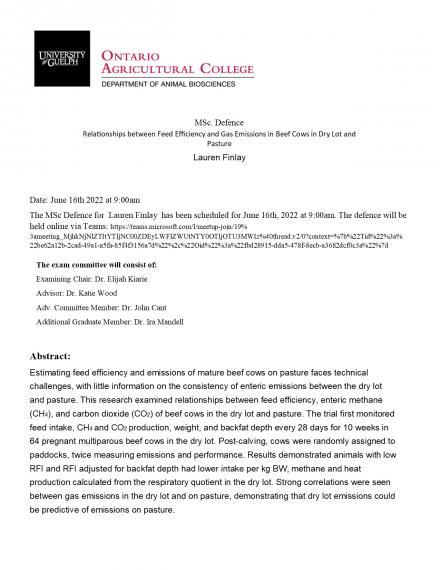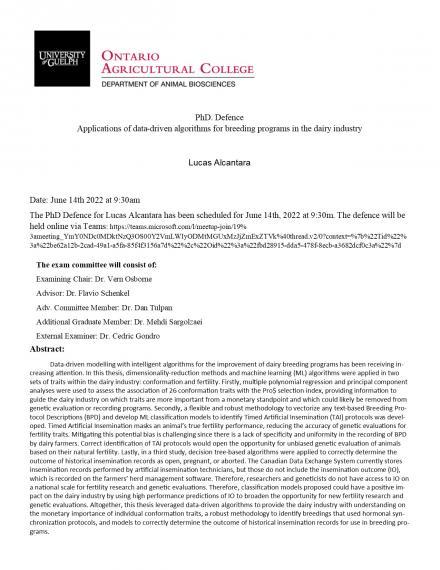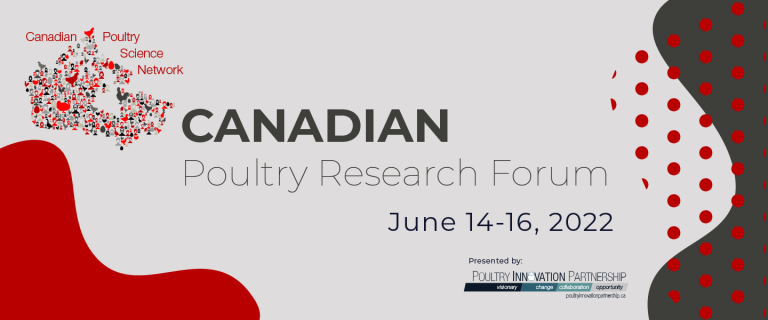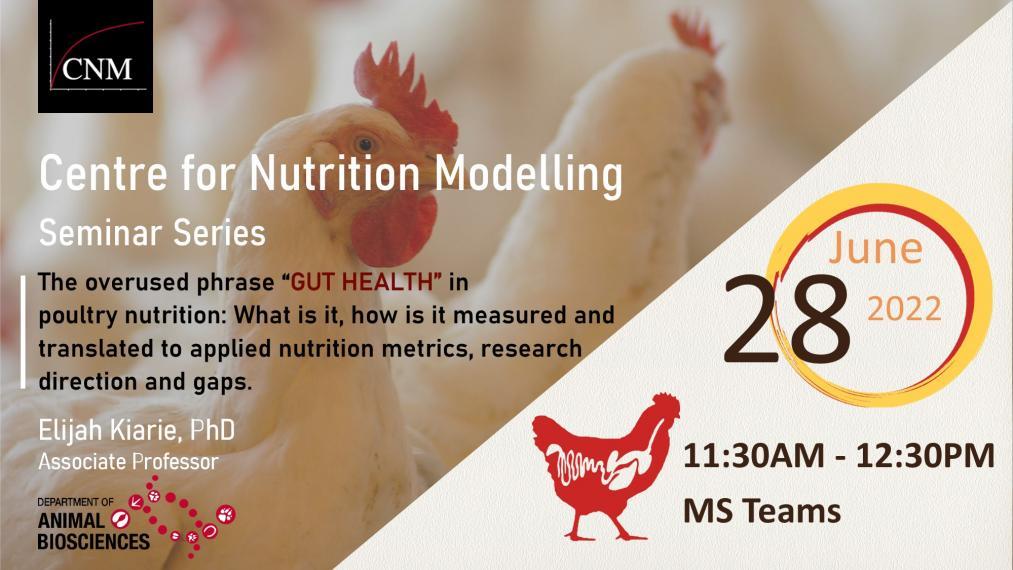
CNM Seminar - Gut Health in Poultry Nutrition
Welcome to this month's installment of the 2022 ‘Virtual’ Nutrition Seminar Series hosted by the Centre for Nutrition Modelling of the Animal Biosciences Department.
Each month in 2022, CNM will deliver seminars from a different lab within the Nutrition group, and share their exciting new research in a dynamic virtual manner.


